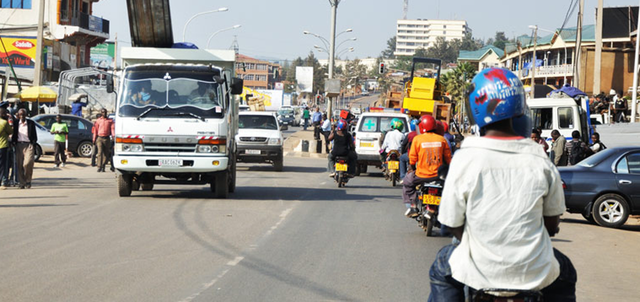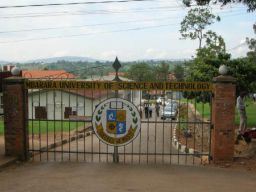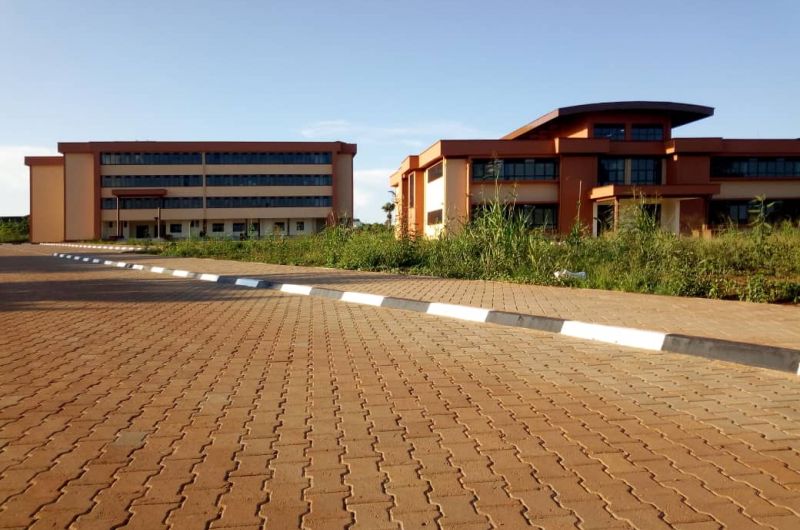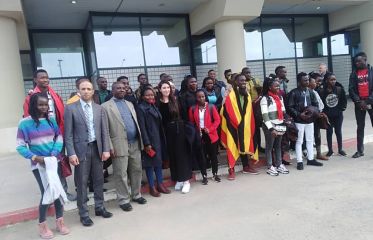Breaking News
- Flexible Remote Work Opportunity for University Students: Earn $100–$250 Per Month ...Read More
- Ministry of Education and Sports Azerbaijan Government Scholarships For 2025-2026 Academic Year ...Read More
- Government Sponsorship Undergraduate Admission Lists 2025-26 for Makerere University ...Read More
- Ministry of Education And Sports: Egyptian Government Scholarships 2025-2026 Academic Year ...Read More
- Ground Breaker Full Scholarship for girls to study Software Engineering 2025 July Intake ...Read More
- Tony Elumelu Foundation Entrepreneurship Programme (TEEP) 2025 for young African Entrepreneurs ...Read More
- DESIGNING FUTURES 2050 International Design Competition 2025 (€15,000 prize) ...Read More
- Ground Breaker Full time Scholarship for girls to study Software Engineering 2025 Intake ...Read More
- Ministry of Education And Sports Algerian Vocational Training Scholarships for 2024-2025 AY ...Read More
- Ministry of Education and Sports Advert for the Algerian Government Scholarships for 2024-2025 ...Read More
Using Smartphones to Fight Africa’s Second Greatest Killer

Want a fun statistic to share at the watercooler? In Rwanda, a very safe country by regional standards, you are 365 times more likely to be killed in a traffic related death than in the United Kingdom. Don’t do any research on the Central African Republic, you will wonder why authorities let cars in the country at all.
This plague of traffic fatalities, the second greatest killer on the continent after HIV/AIDS, is not particularly well understood from a research perspective. What is certain is that the macabre total comes from many converging issues such as new drivers who haven’t had adequate training, increasingly good roads which allows for drivers to go literally breakneck speeds, a construction focus on more tarmac than safety, and inadequate first responder services to the scenes of accidents.
Introducing SafeMotos
My company, SafeMotos, is looking to confront our own chunk of this equation: that of motorcycle taxis. If you have been to cities as varied as Doula, Ougadougou, Bamako, Kampala or Kigali you know that motorcycle taxis are a way of life. They are a way to avoid the traffic jam and affordably go from point A to point B and often make up the majority of vehicles on the road.
If you have spent significant time in any of these places or have had the misfortune to visit a hospital you probably know the danger of motorcycle taxis, stories abound of lost loved ones and emergency rooms flooded with drivers. In Kigali, where SafeMotos has launched, the Kigali City Council states that 80% of traffic accidents involve a motorcycle taxis. This was a statistic the SafeMotos team didn’t believe until after talking to the research team and now believes to be accurate.
The issue which SafeMotos is confronting is the fact that riders gamble with their lives and choose a rider at random from the side of the street, having no knowledge of whether this is 14 year old on his first day on the job or a seasoned professional.
Our Solution
 Our solution is a safer Uber for African motorcycle taxis. The front end is instantly recognizable with a Google Maps interface swarming with moto drivers, users simply drop a pin and get picked up. It’s on the back end where things get interesting.
Our solution is a safer Uber for African motorcycle taxis. The front end is instantly recognizable with a Google Maps interface swarming with moto drivers, users simply drop a pin and get picked up. It’s on the back end where things get interesting.
SafeMotos’ drivers are equipped with affordable smartphones loaded with a gyroscope, an accelerometer and GPS sensors. We pull data from these sensors that let us see data on drivers’ habits. We can see if a driver is accelerating like he wants to wheelie, has a top speed that could launch an airplane or is breaking like he is always avoiding brick walls.
We then crunch this data through telematics algorithms developed by American insurance companies and have developed a risk model that allows us to make judgement call on drivers’ habits. We are excited that after more than 200,000km of data we have a strong corroboration: our best drivers in our telematics system are the same drivers our customers are ranking as our best drivers.
SafeMotos is able to take the gamble out of taking a motorcycle taxi by only connecting you to drivers who are in the top level of our risk model.
Our Business Focus
While from an academic perspective this is exciting, to conquer the scale of the problem has led SafeMotos to be strongly pro-business. With at least 10,000 drivers just in Kigali and millions spread across the continent, this is an enormous market. New York City, for example, has just 12,000 vehicular taxis.
To create a product that can go viral and scale the SafeMotos team has built something that customers love to use. This has led to a business model where we focus on the convenience of getting a SafeMoto right to your gate, competitive pricing with drivers giving SafeMotos a commission for more customers and most importantly a for profit approach that will let the company grow towards its ambition of letting any motorcycle taxi user on the continent be able to take the gamble out of a ride.
With 42 drivers currently in Kigali having performed more than 3,000 trips, we are ambitiously working towards changing the story on ever increasing road deaths in Africa. We are showing that just as in America and Europe in the 1950’s before airbags and seatbelts, innovative thinking can save lives.
By Barrett Nash, co-founder of SafeMotos
Source * http://www.ictworks.org/2015/12/30/using-smartphones-to-fight-africas-second-greatest-killer/
Top Courses Currently Admitting
-
Diploma in Entrepreneurship and Business Management
Management and Training Advisory Center (MTAC)
-
Bachelor of Business Law
Nkumba University
-
Diploma in Graphic Digital Design
Nkumba University
-
Bachelor of Science in Agriculture with Biotechnology & Plant Breeding
Bugema University
-
Diploma in Project Planning & Management
Makerere University





























